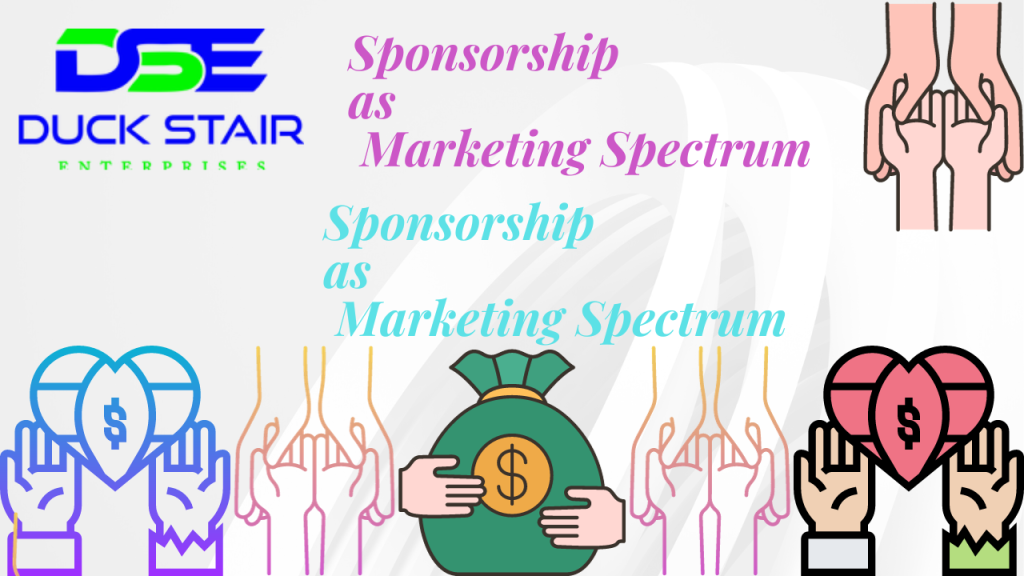
1-Sponsorship as Marketing Spectrum
The advertising range alludes to the scope of exercises and methodologies that organisations use to advance their items or administrations and associate with their interest group. This range includes different showcasing procedures and channels, each with its own attributes and purposes.Here’s a breakdown of the marketing spectrum: Traditional Marketing: Print Advertising: This includes newspaper and magazine advertisements. Broadcast Advertising: Television and radio commercials fall into this category. Direct Mail: Sending physical promotional materials, such as brochures and catalogues, via postal mail. Outdoor Advertising: Billboards, transit ads, and signage. Digital Marketing:
Content Promoting: Making and circulating significant substance to draw in and connect with an ideal interest group.
Web-based Entertainment Advertising: Using online entertainment stages like Facebook, Instagram, Twitter, and LinkedIn to reach and cooperate with clients.
Web crawler Showcasing (SEM): Utilising paid publicising on web search tools, similar to find out about Advertisements, to show up in list items.
Site design improvement (Web optimization): Advancing site content to rank higher in natural (neglected) list items.
Email Marketing: Sending targeted emails to nurture leads and retain customers.
Member Showcasing: Collaborating with partners to advance items or administrations in return for a commission.
Powerhouse Advertising: Teaming up with forces to be reckoned with to underwrite items or administrations to their supporters.
Display Advertising: Placing visual ads on websites, apps, or social media. Event Marketing: Trade Shows and Exhibitions: Participating in industry-specific events to showcase products or services.
Sponsorships: Supporting events, teams, or organisations to gain visibility and goodwill.
Conferences and Workshops: Hosting or attending industry-related events to network and share knowledge.
Content Types:
Text Content: Articles, blog entries, digital books, whitepapers, and other composite materials.
Visual Substance: Pictures, infographics, recordings, and other outwardly engaging resources.
Interactive Content: Quizzes, polls, webinars, and other engaging content formats.
Audio Content: Podcasts and audio recordings. User-Generated Content (UGC): Content created by customers or users, such as reviews and social media posts.
Marketing Strategies: Segmentation and Targeting: Identifying specific customer segments and tailoring marketing efforts to their needs and preferences.
Positioning: Crafting a unique value proposition and brand image in the minds of consumers.
Customer Relationship Management (CRM): Managing and nurturing customer relationships to foster loyalty.
Data Analytics: Using data and analytics tools to measure and optimise marketing performance.
Inbound focuses on attracting customers through content and engagement, while outbound involves reaching out to prospects directly through ads or cold outreach. The choice of marketing strategies and channels within this spectrum depends on factors such as the target audience, budget, industry, and marketing goals. Successful marketing often involves a mix of these strategies to reach a wider audience and achieve specific objectives.
